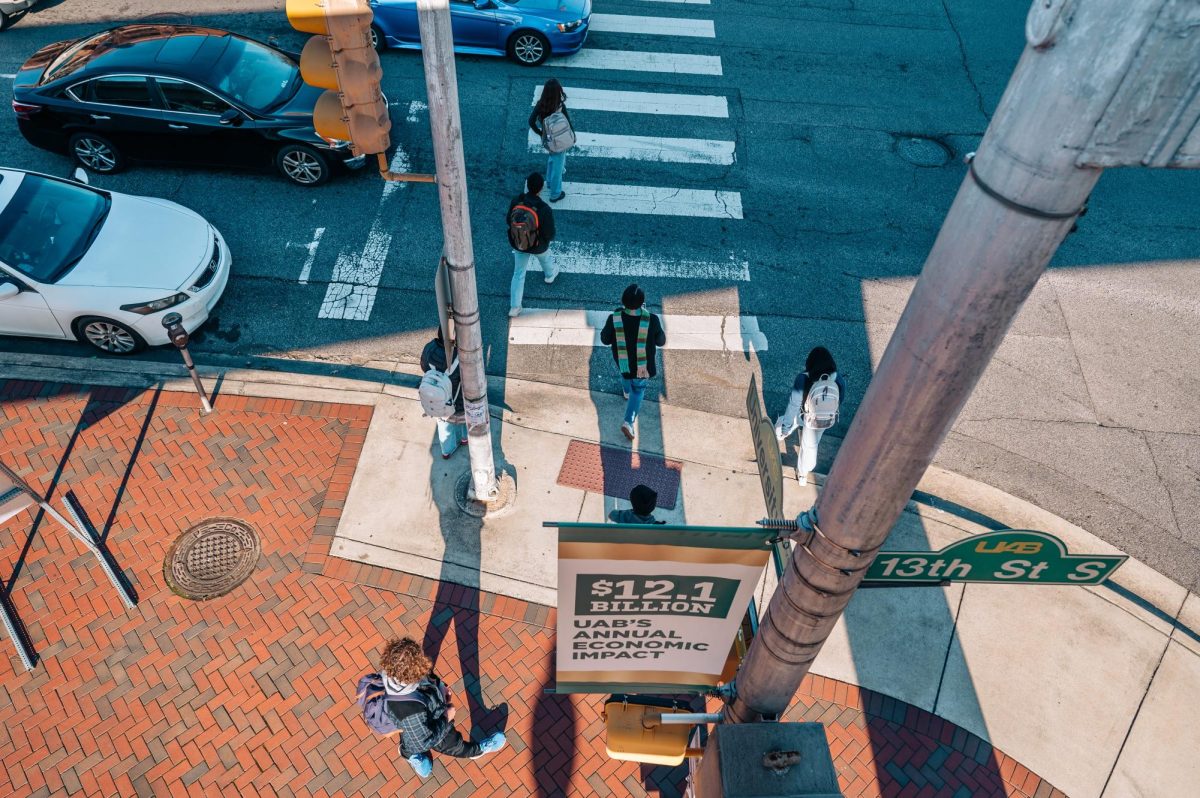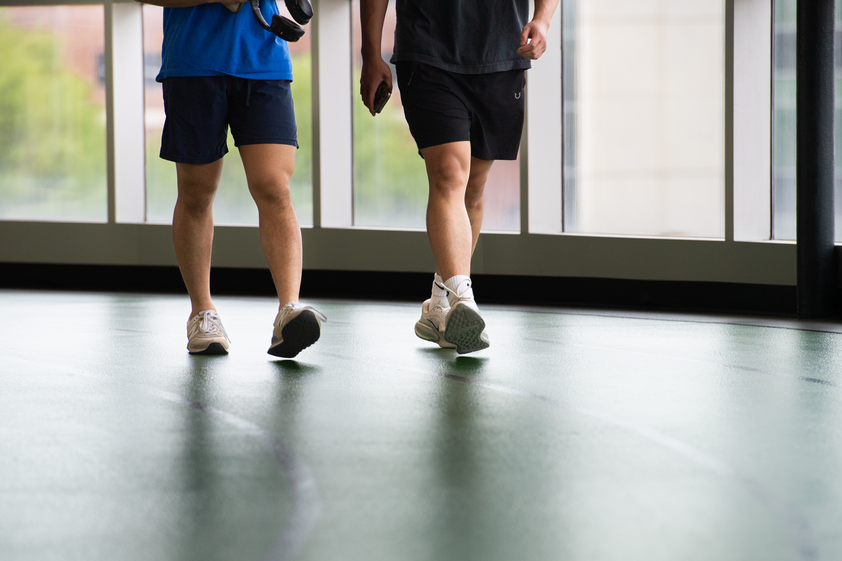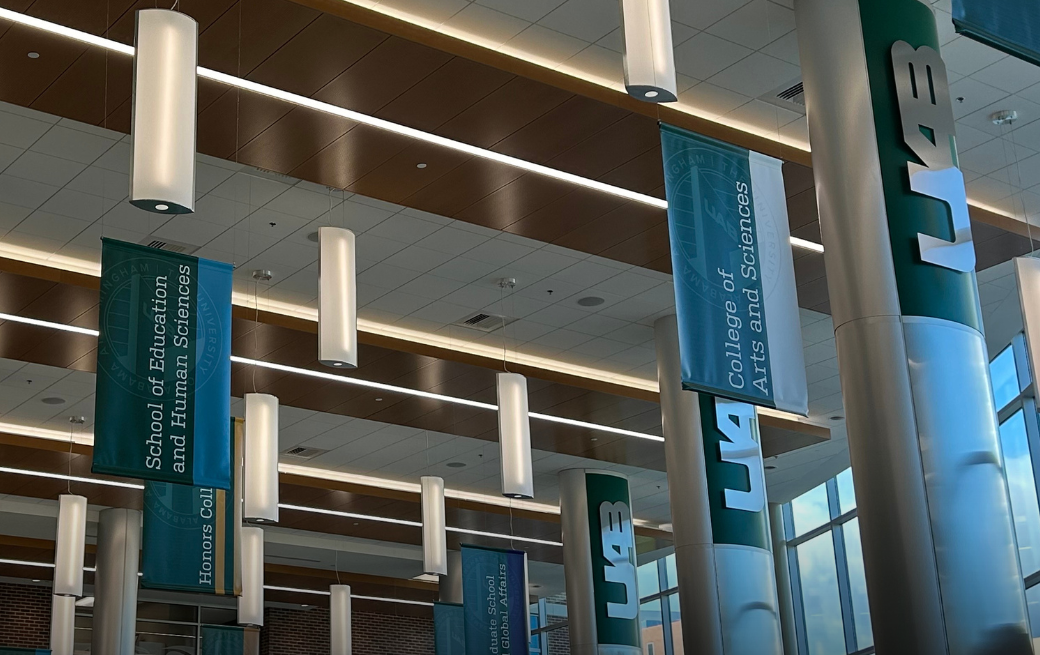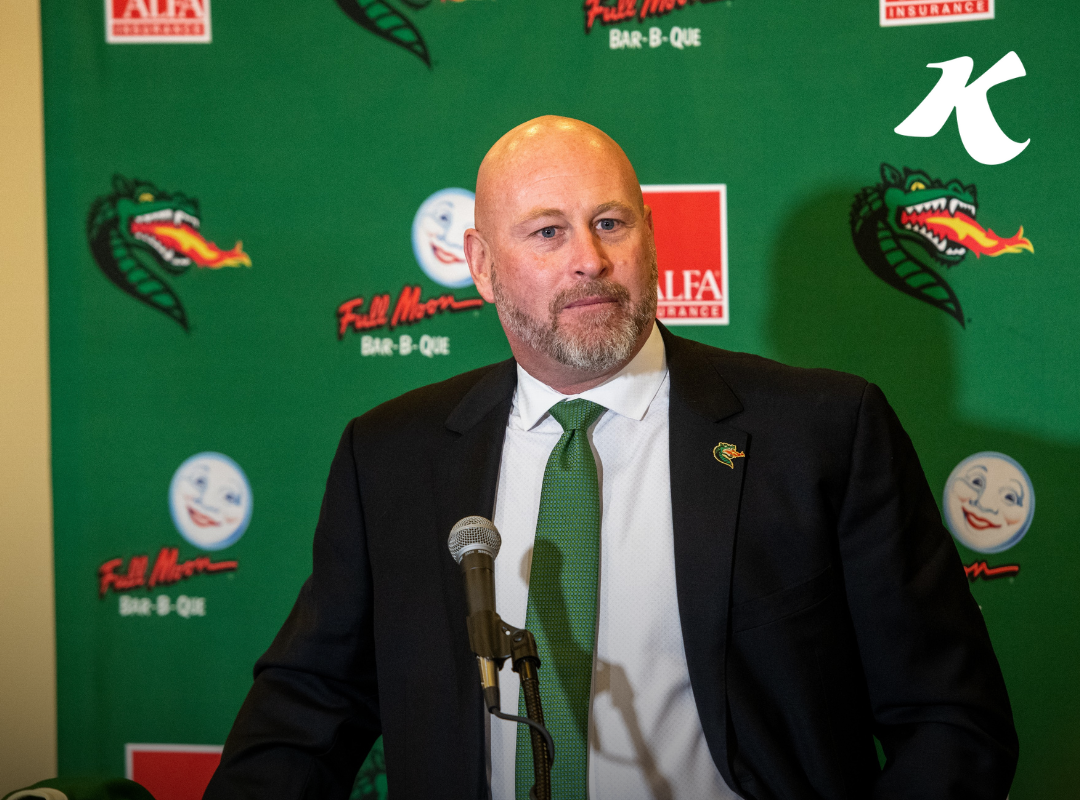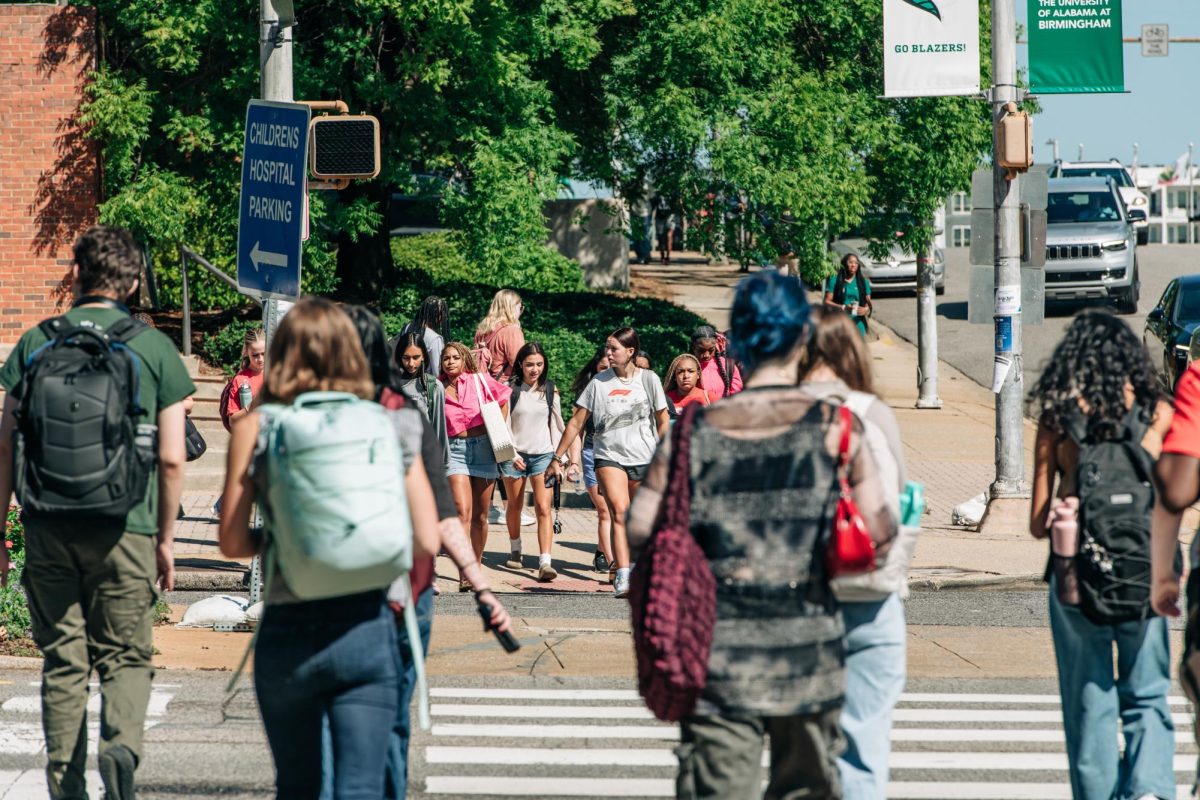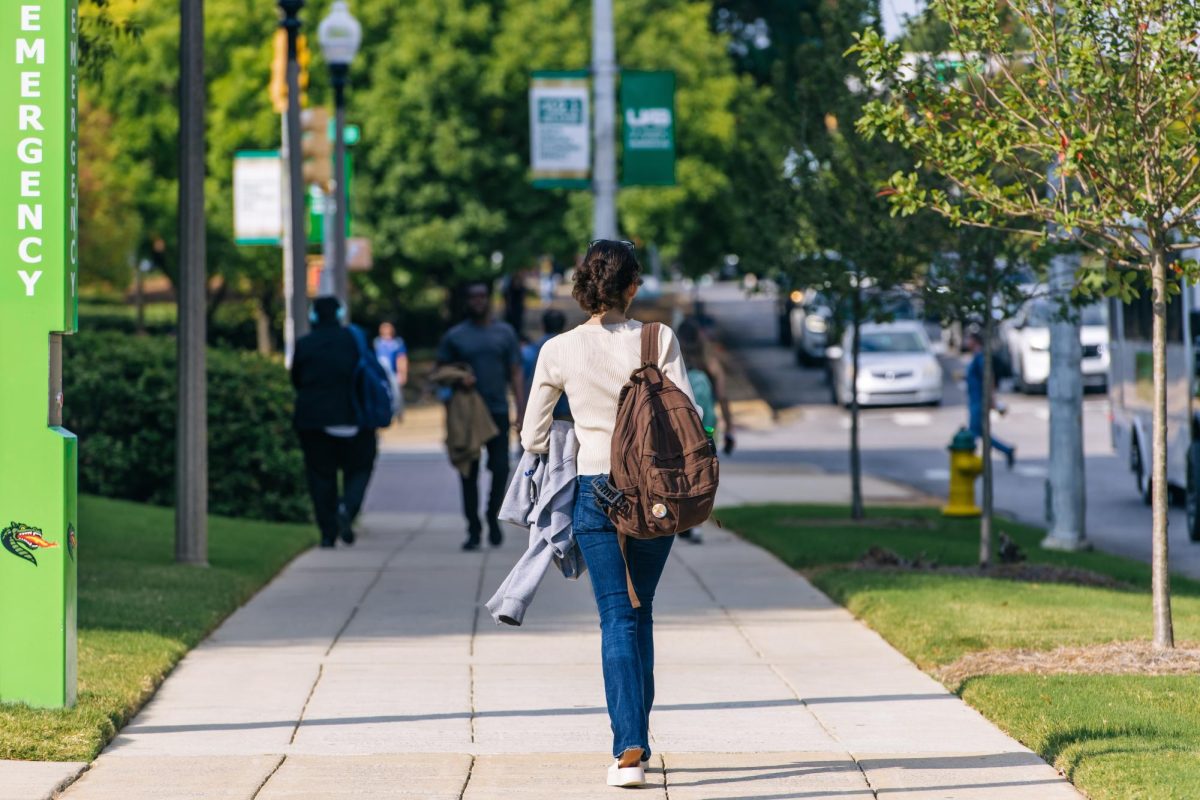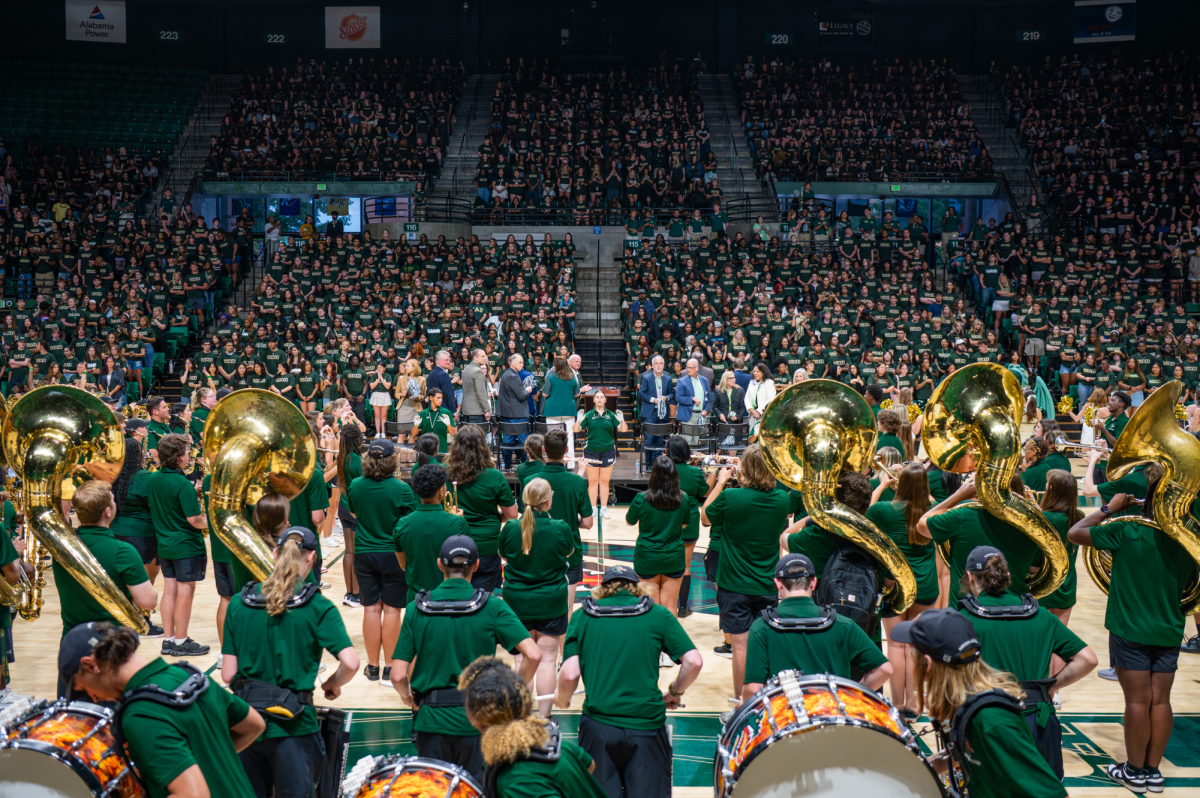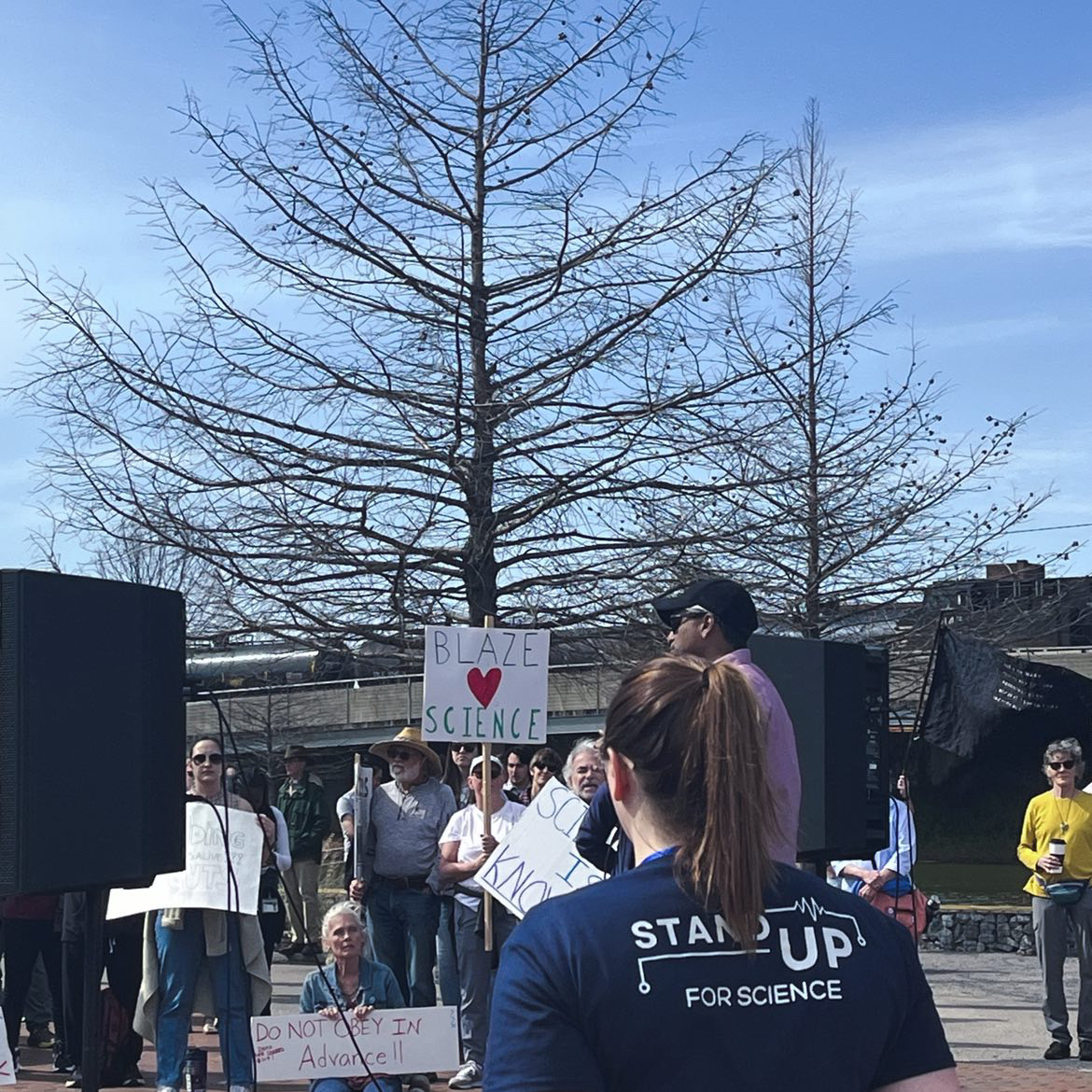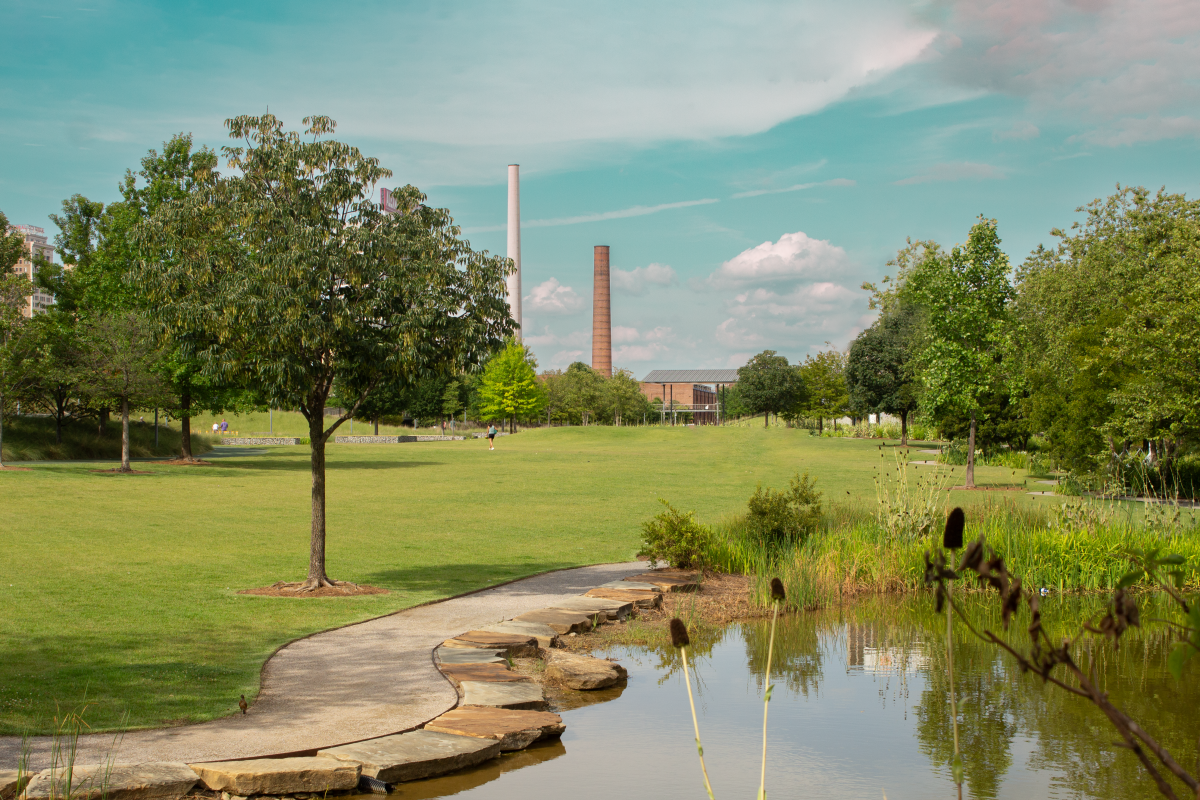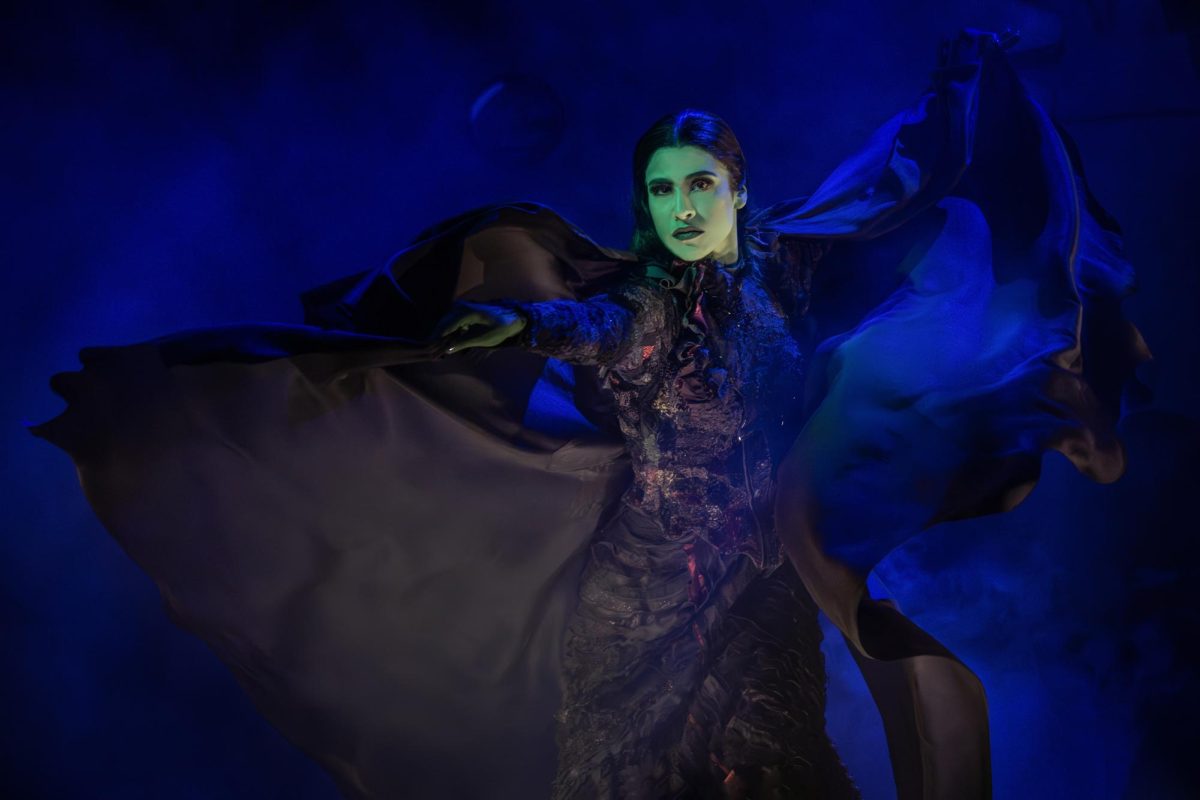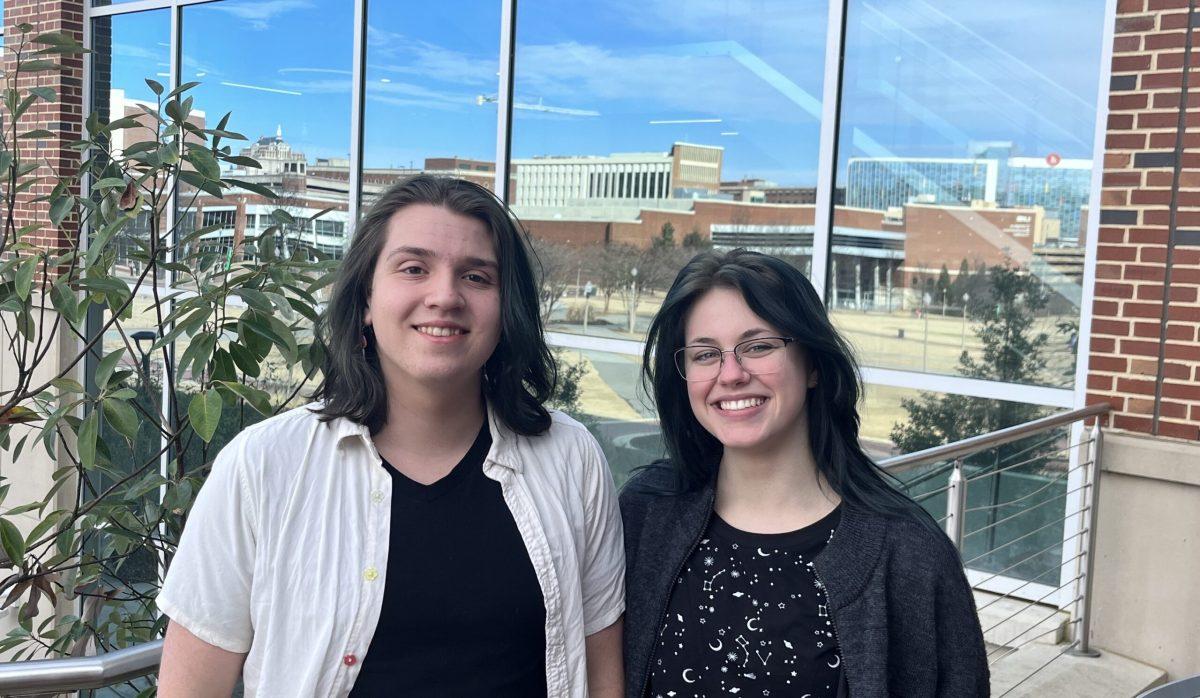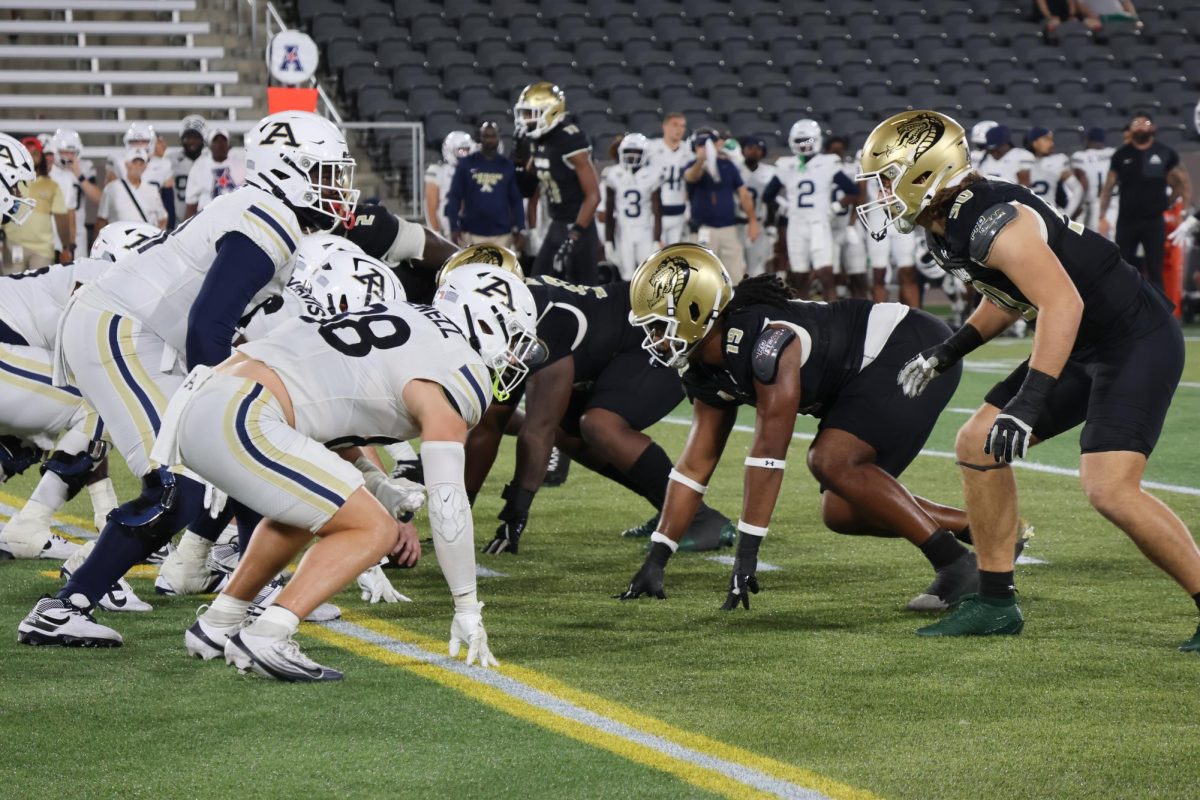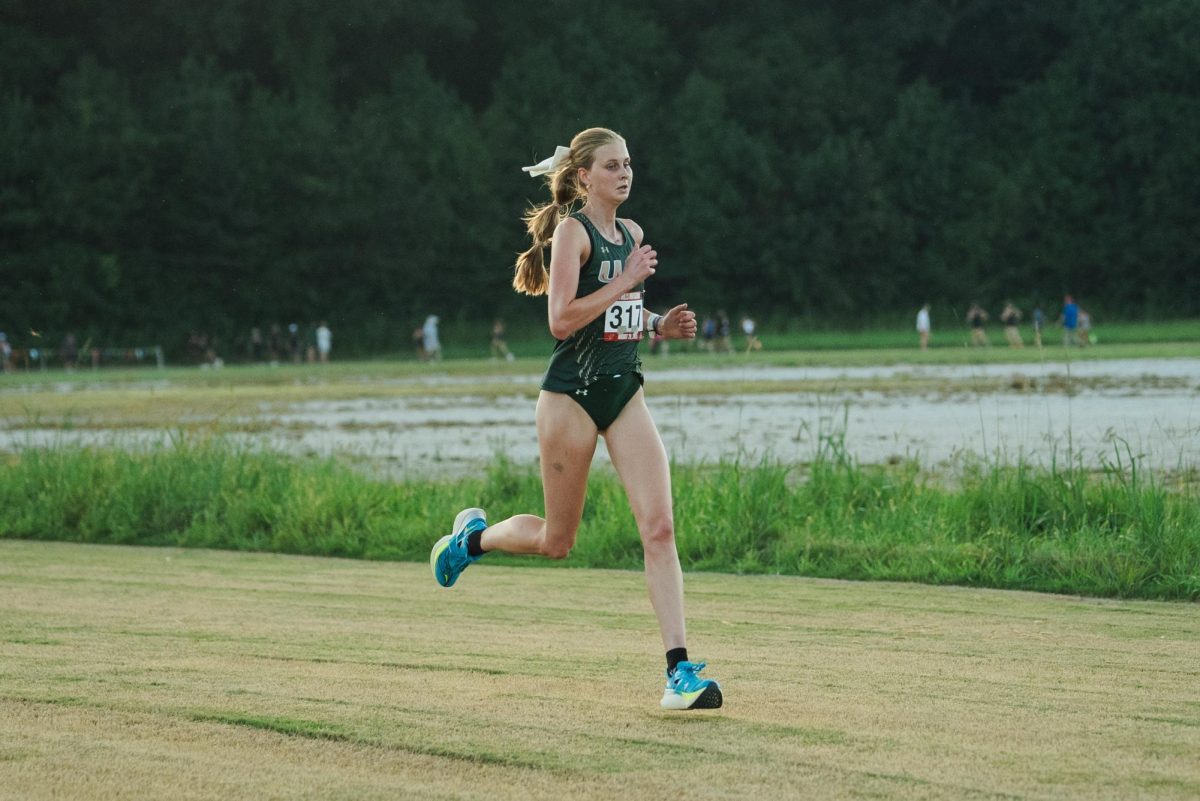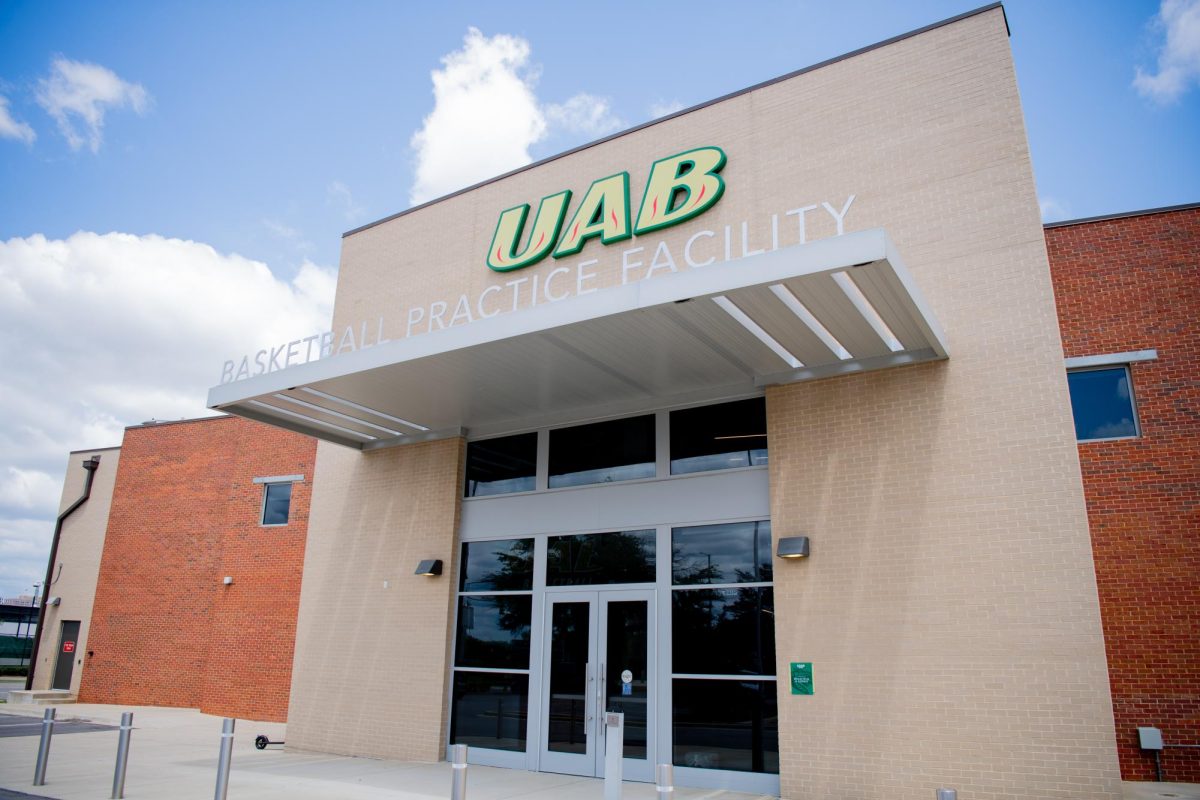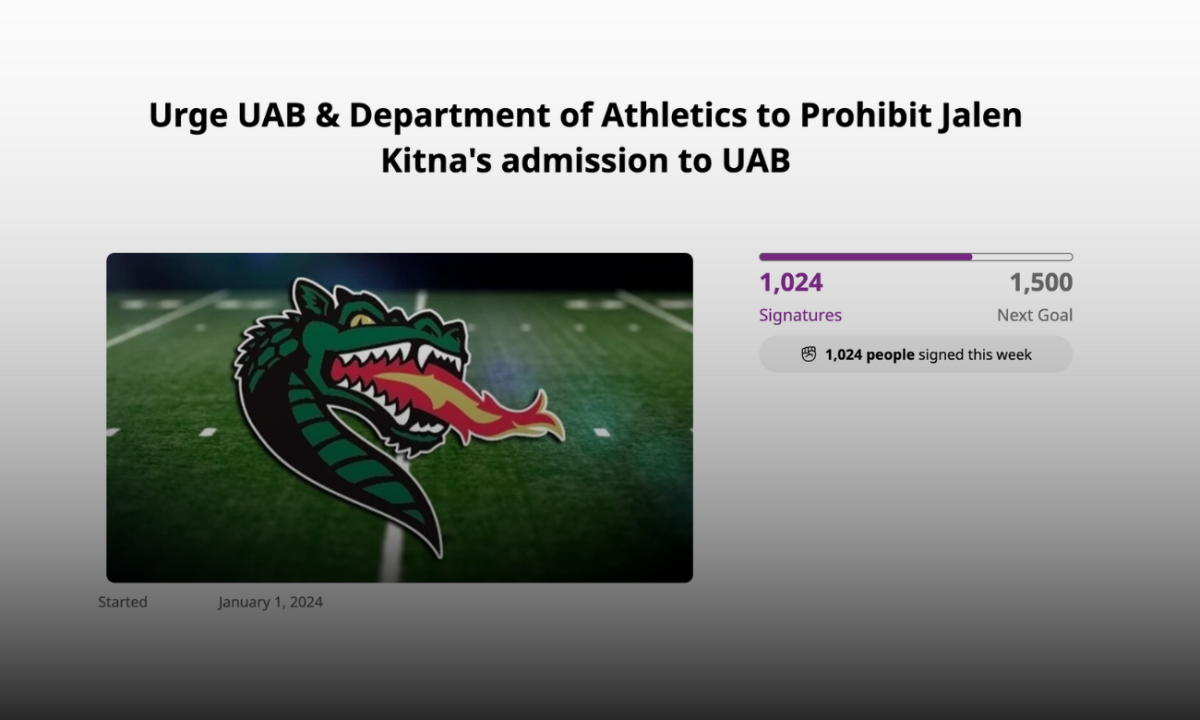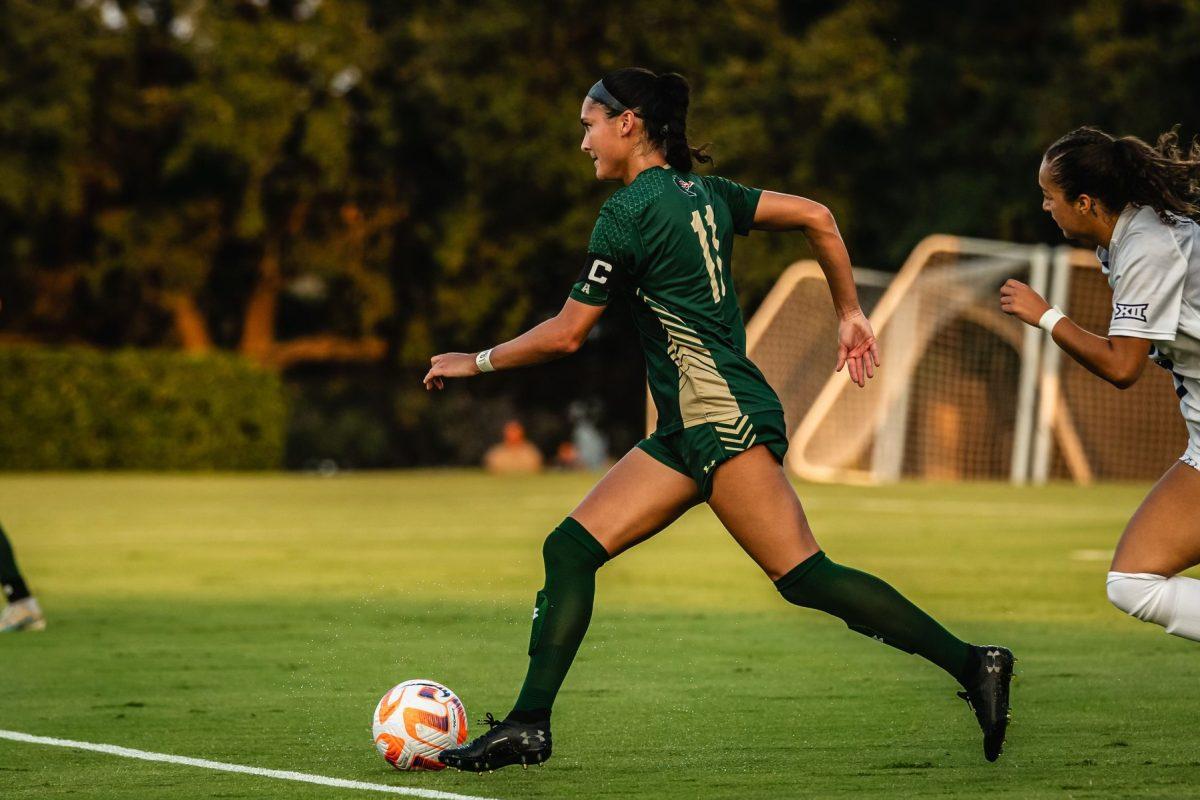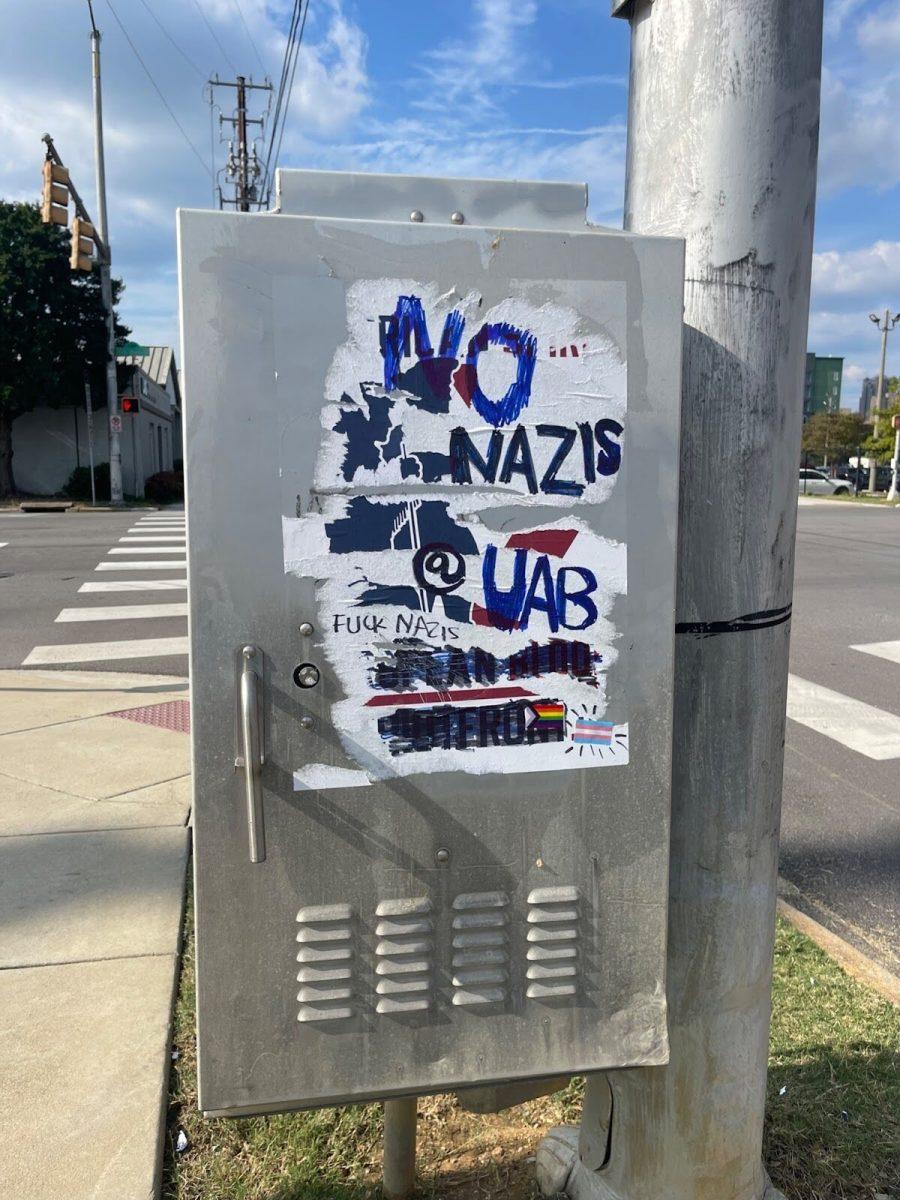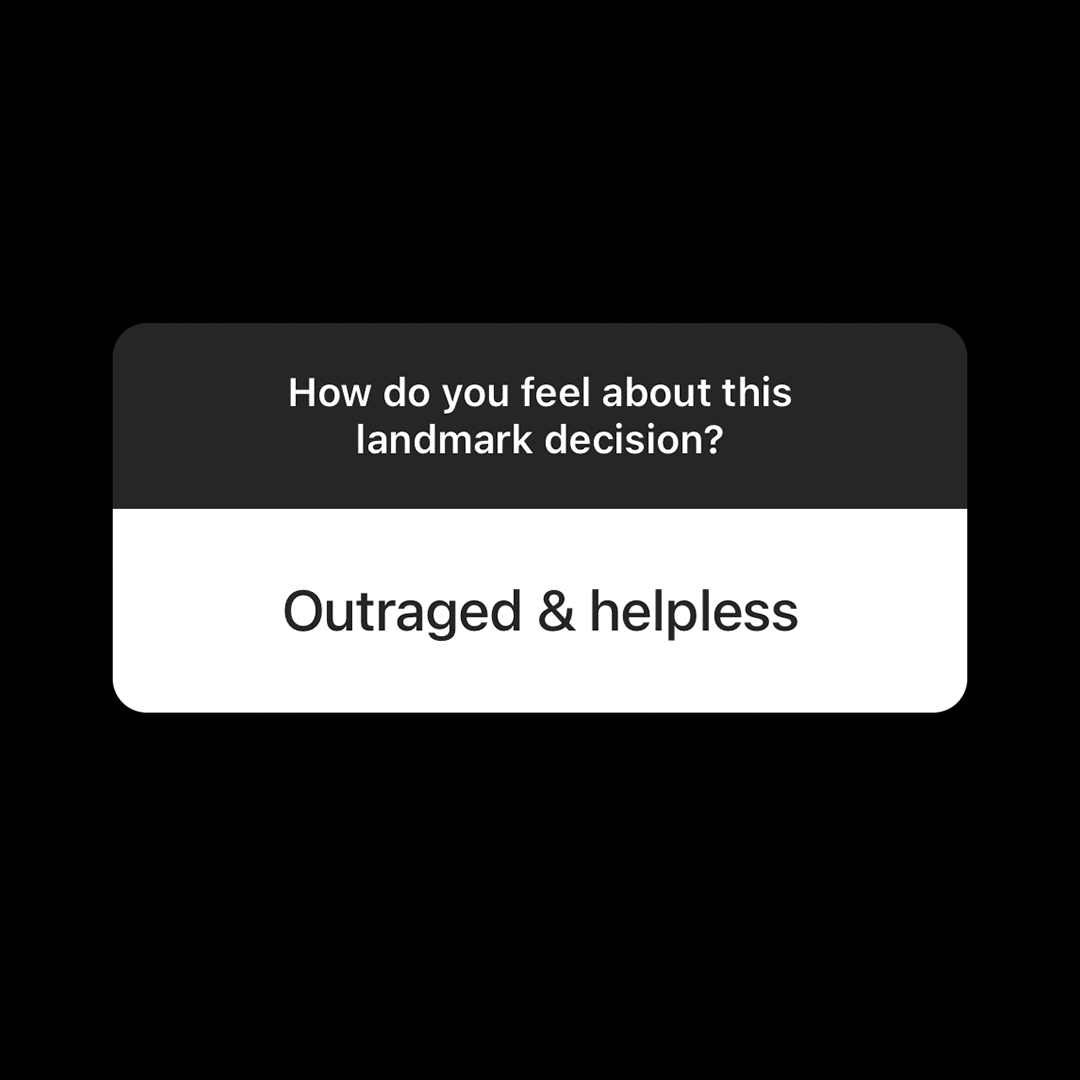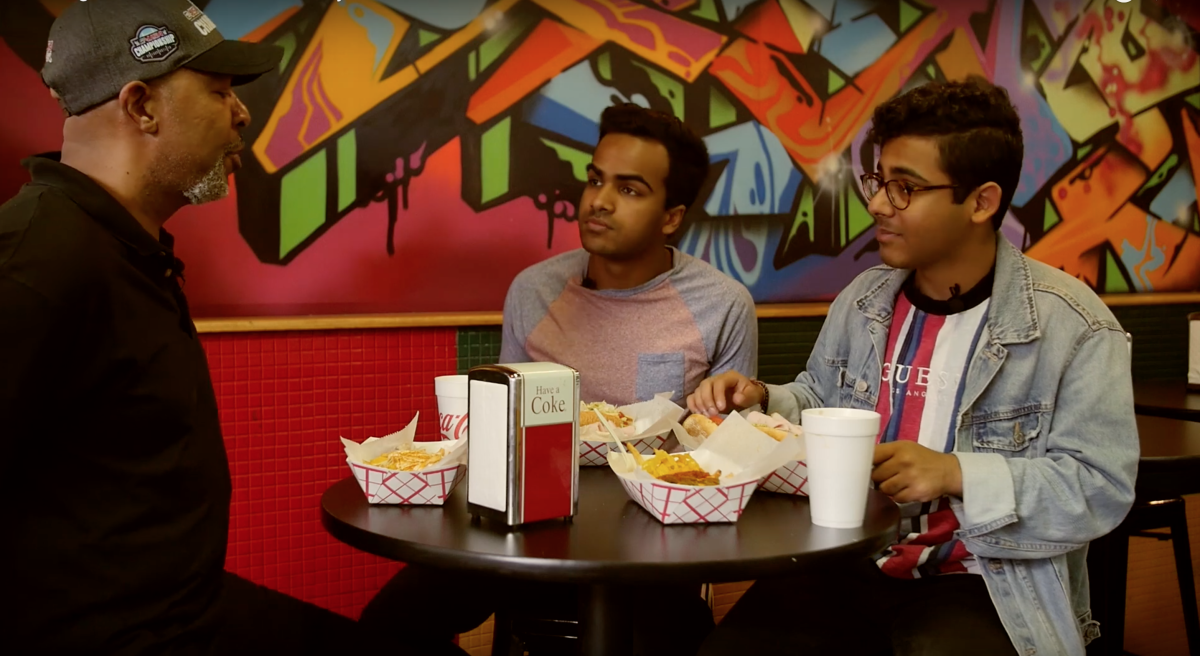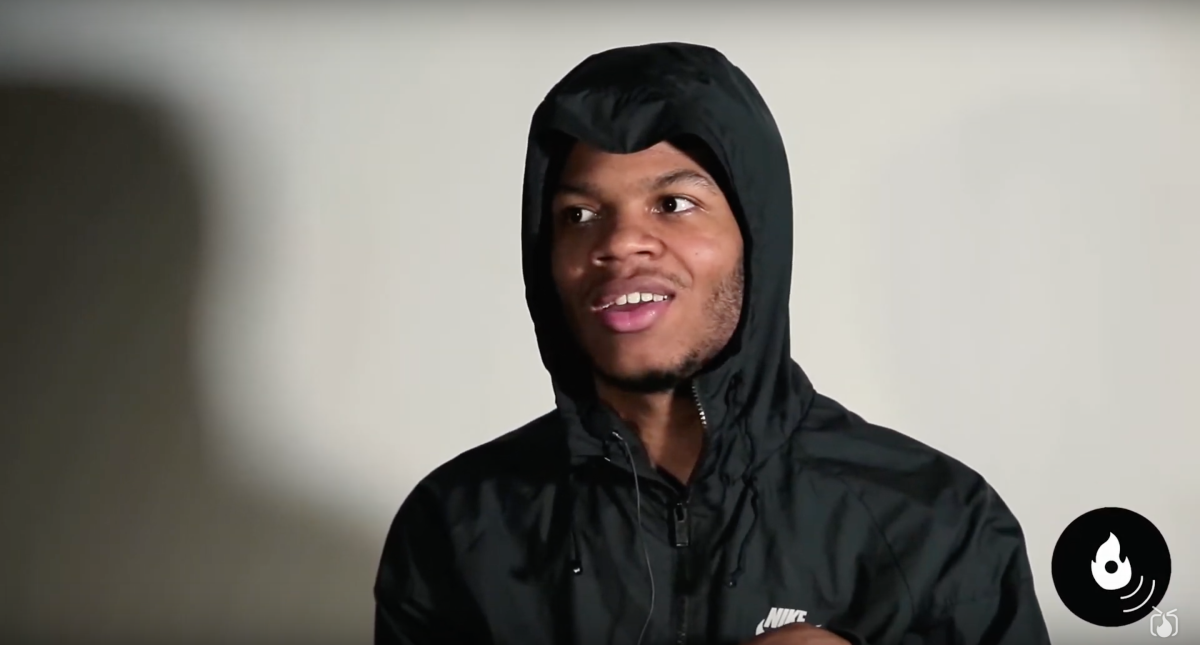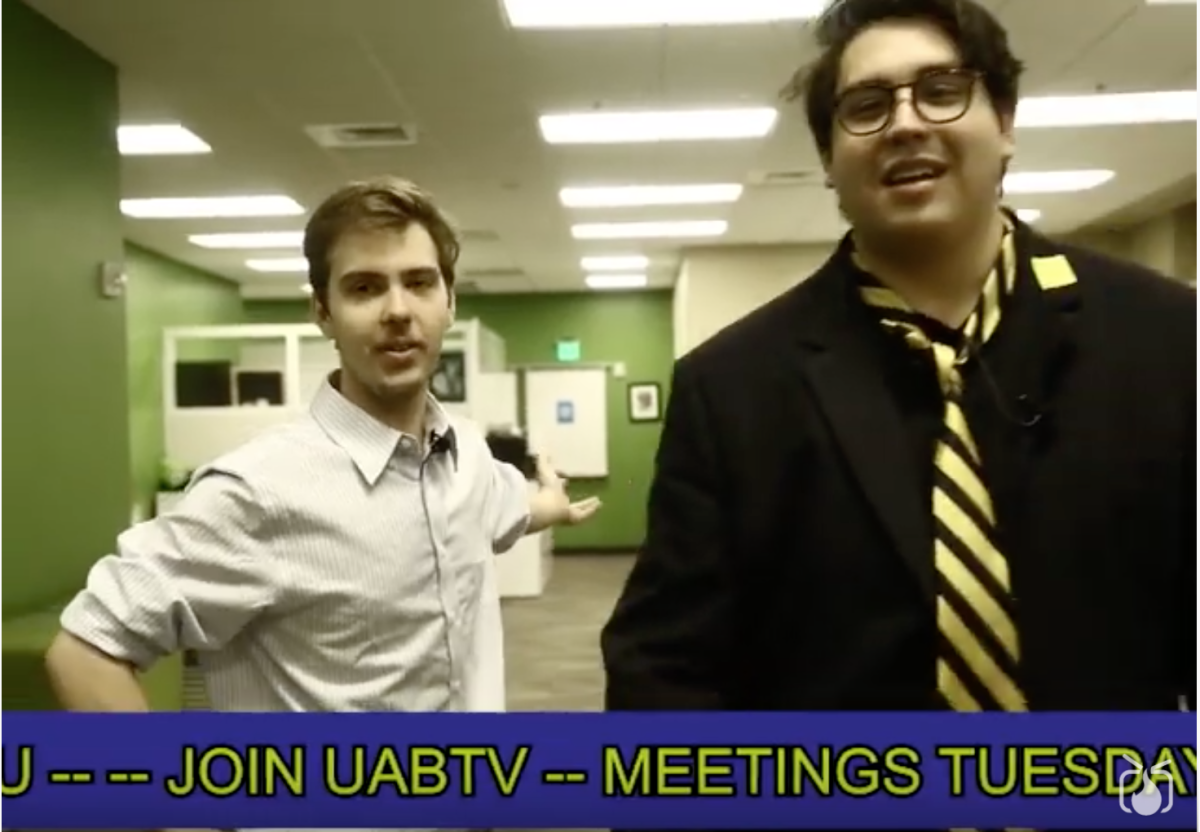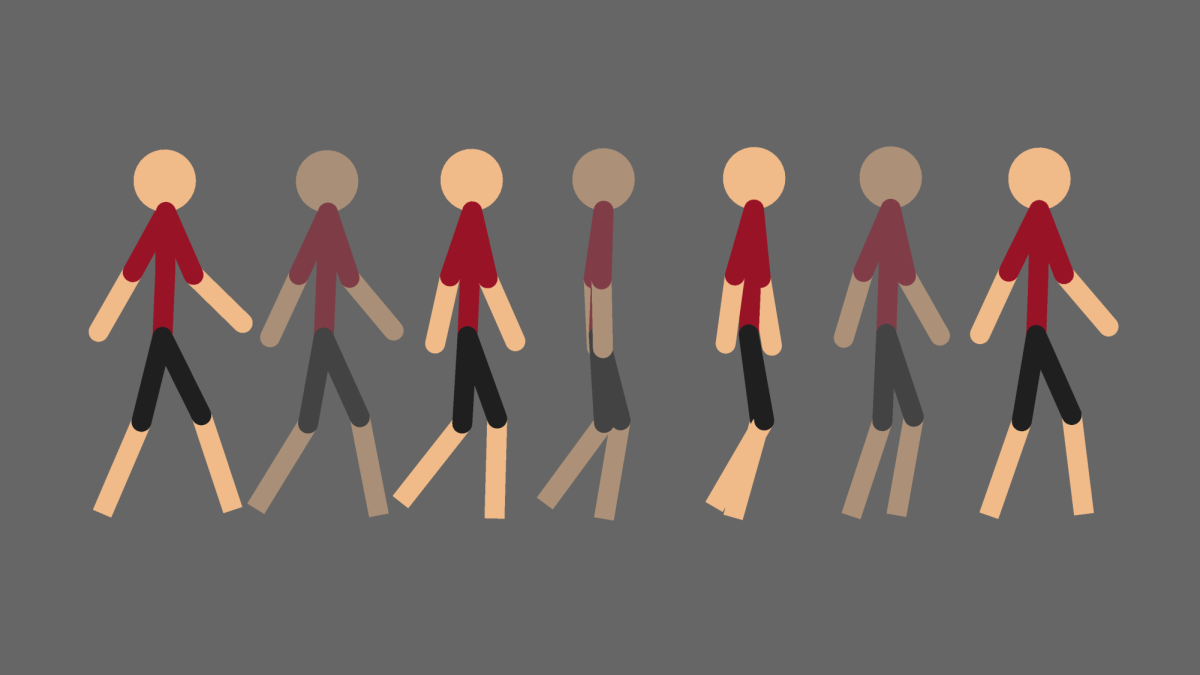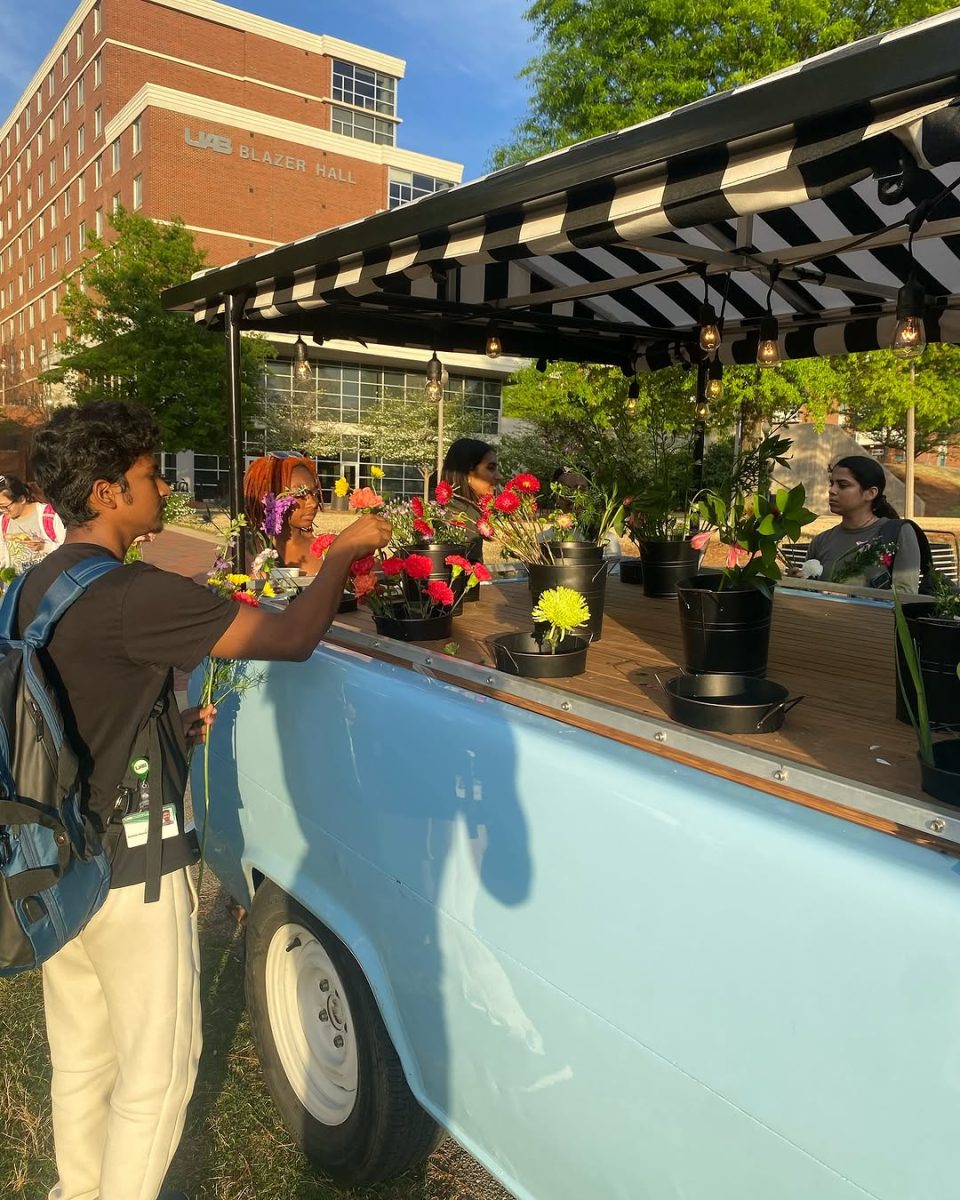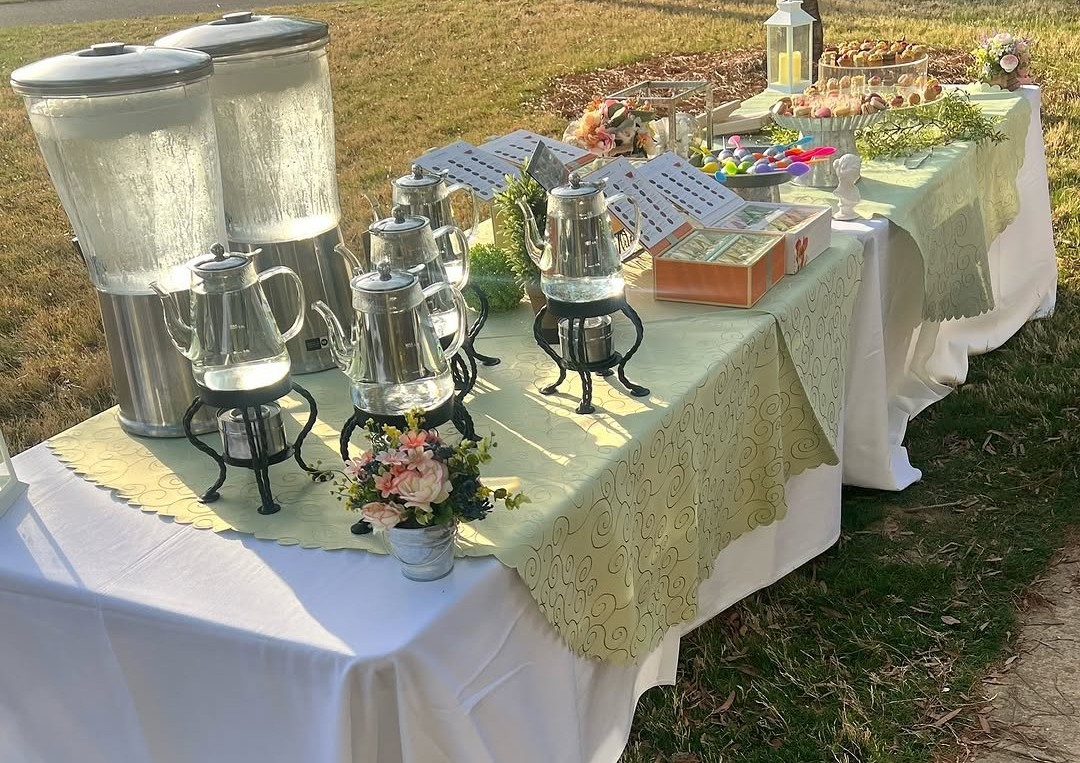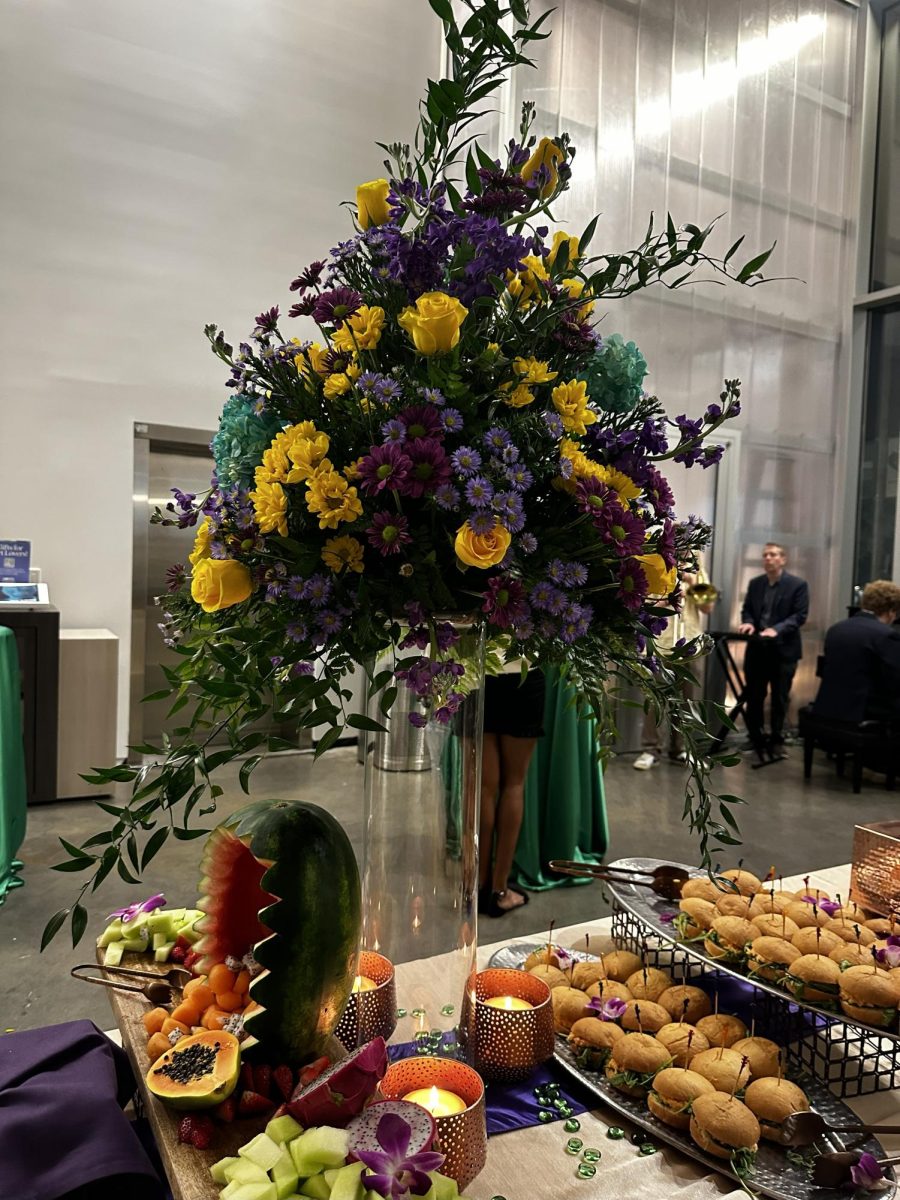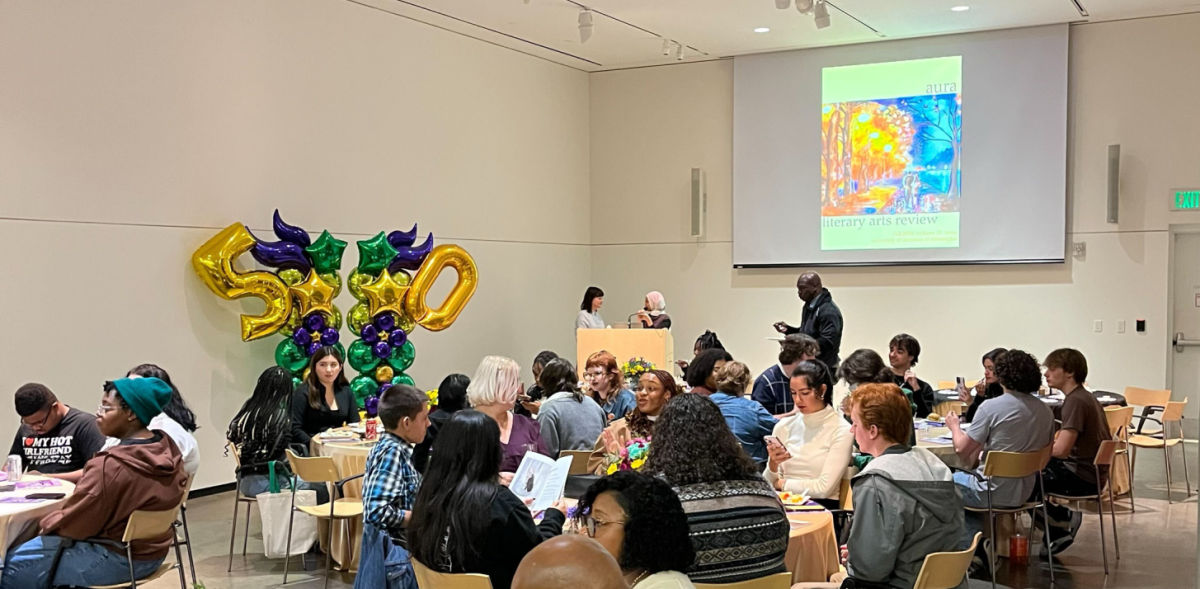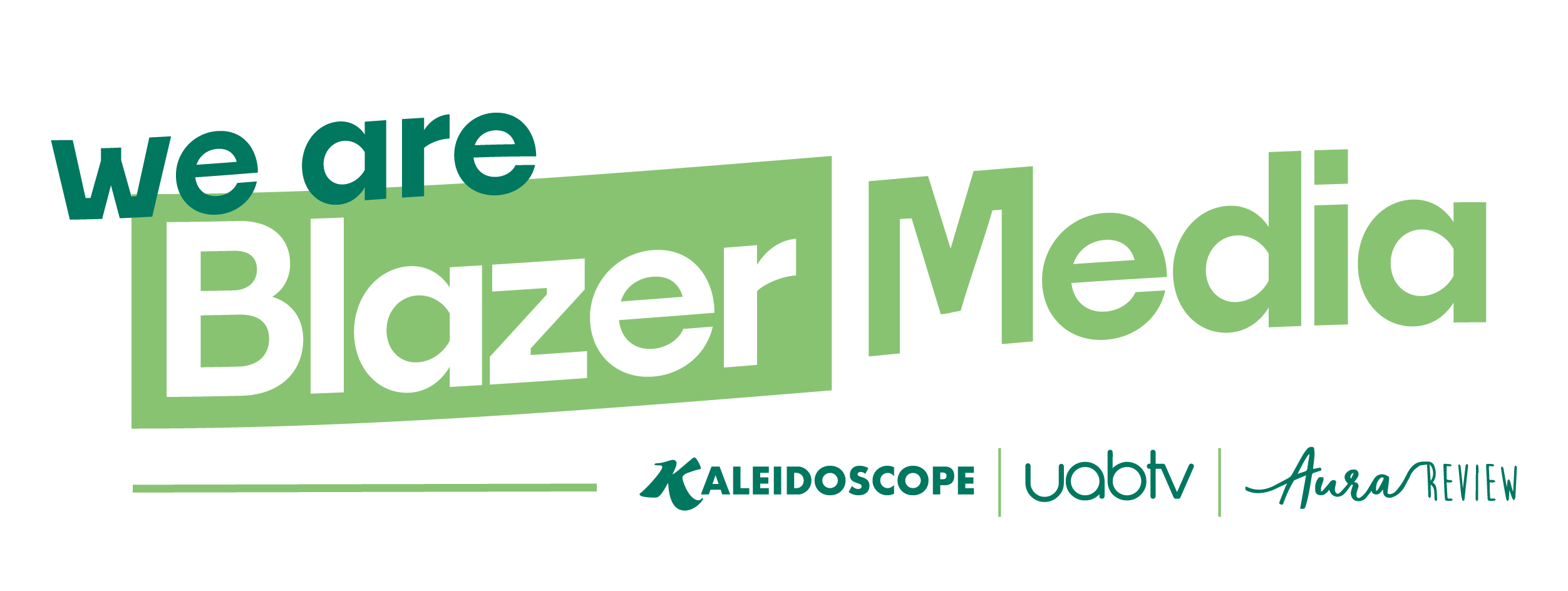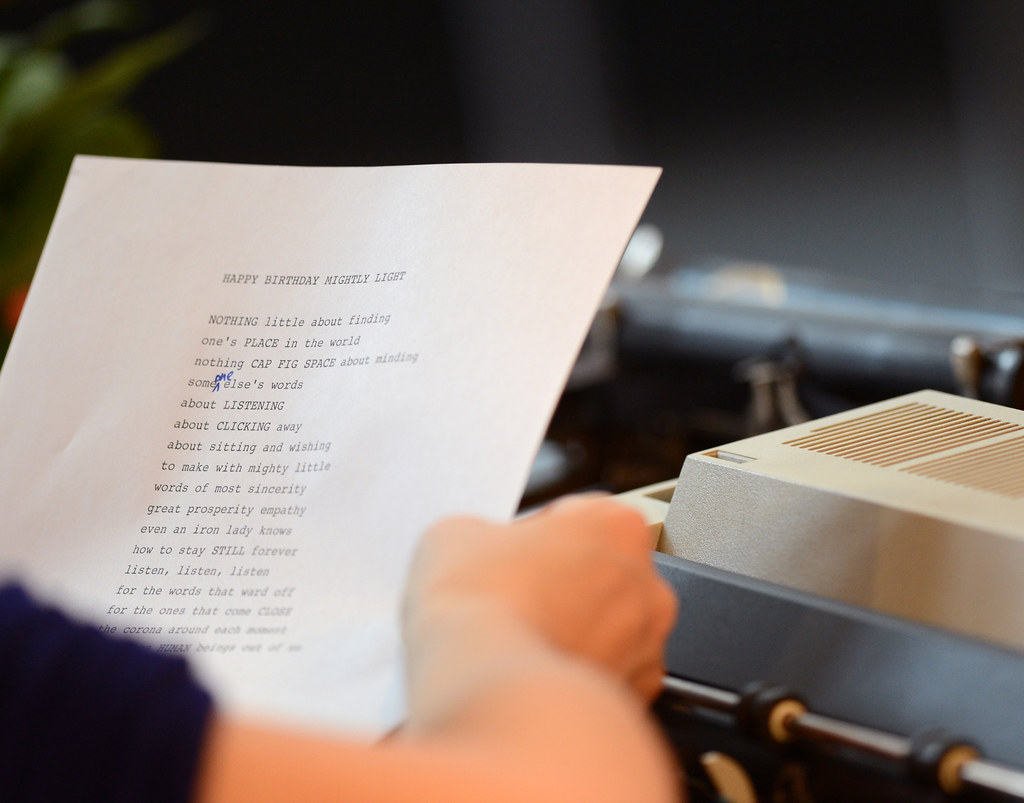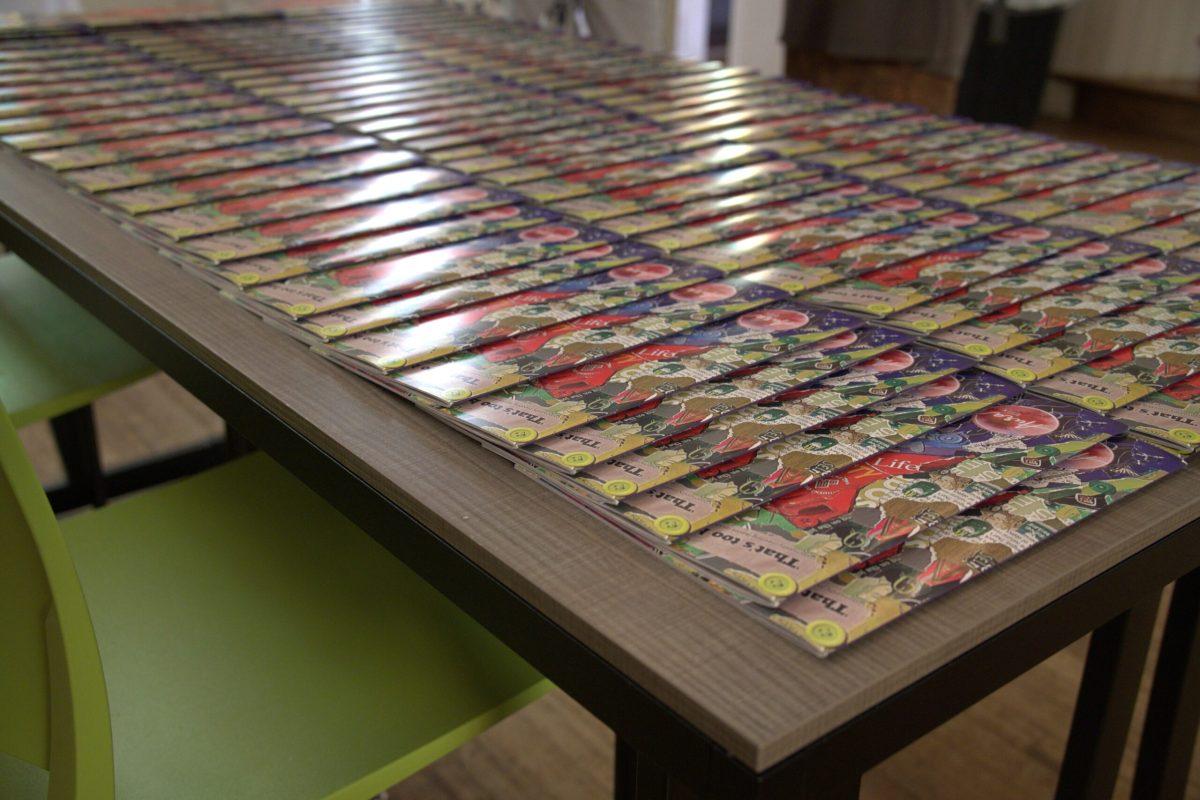On November 11th, the Abroms-Engel Institute for the Visual Arts (AEIVA) brought together UAB creative writing students, alumni from the Civil Rights Institute’s Youth Legacy Program, and guest reader Ashley M. Jones for an impactful night of poetry. Ashley M. Jones read two of her poems, one coming from her new poetry collection Reparations Now! about the myth that racism ends above the Mason-Dixon Line. Alumni from the Youth Legacy Program worked with the Jefferson County Memorial Project to read poems written by currently incarcerated people. AEIVA is currently hosting “Marking Time: Art in the Age of Mass Incarceration,” an exhibit that showcases art pieces about mass incarceration.
The students were tasked with writing an ekphrastic poem based on one of the pieces in the exhibit. Anna Ulrey, one of the students who participated in the event, described her first trip to the exhibit as overwhelming. “I’ve always struggled to understand art, probably because it’s something I’ve always tried to force. I tried to slow down and let a piece speak to me if it wanted to, and I eventually found Hough’s piece.” Ulrey said. Her poem “Pulls,” was inspired by James “Yaya” Hough’s untitled work. Cheyenne Hollowell was struck by Tameca Cole’s Locked in a Dark Calm. She stated, “One of the eyes looks directly at you as if inviting you into Cole’s mind; it almost dares you to invest yourself in this piece, yet you know that you will never be able to truly understand. To me, the juxtaposition between the barrier of lived experience and the allure of a piece looking directly at the observer is what made this artwork so powerful.”
After viewing the exhibit and writing their poems, the students then had to go through the revision process. Being committed to detachment is the key to revision for Cheyenne. “Coming into class and allowing yourself to be vulnerable and willing to break your piece apart and build it back up again isn’t easy,” she stated, “ As an amateur “poet”, it can be hard to separate your emotions from your piece, which often inhibits growth and improvement.” Ulrey also shares that sentiment, saying the revision process was enlightening, as she learned a lot about how to let go. “My first draft ended up looking very different from my final,” she replied. Although the poetry students (and alumni readers) recorded videos of themselves reciting the poems for COVID safety precautions, the students were able to return to the exhibit with their classmates and read their pieces in front of the art that inspired them.
Thursday night, a mixed group of in-person and Zoom audience members were able to see the hard work that was put in by these students at the reading. When asked about the difference between sharing your writing with your classmates and a hall full of strangers, Anna said it was “definitely a different feeling.” She continued, “It still felt much more vulnerable sharing with a larger group of strangers, but it wasn’t as alien to me by that point.” Interspersed between the students’ readings were the Alumni from the Youth Legacy Program reciting pieces of poetry written by currently incarcerated people. The collection of poems that were presented highlighted and lifted up the message of the exhibit beautifully. “If you find yourself feeling uncomfortable in this exhibit, I encourage you to sit with this discomfort and critically assess your own emotions,” Cheyenne said, “ I feel like we have the tendency to avoid discomfort, but this exhibit sparks the conversation surrounding mass incarceration and serves as a great starting point for addressing these issues.” Anna, when asked on how the exhibit has impacted her, shared that, “This exhibit opened my eyes to and led me to learn more about this injustice that’s happening not only around the country but here in our community.”
